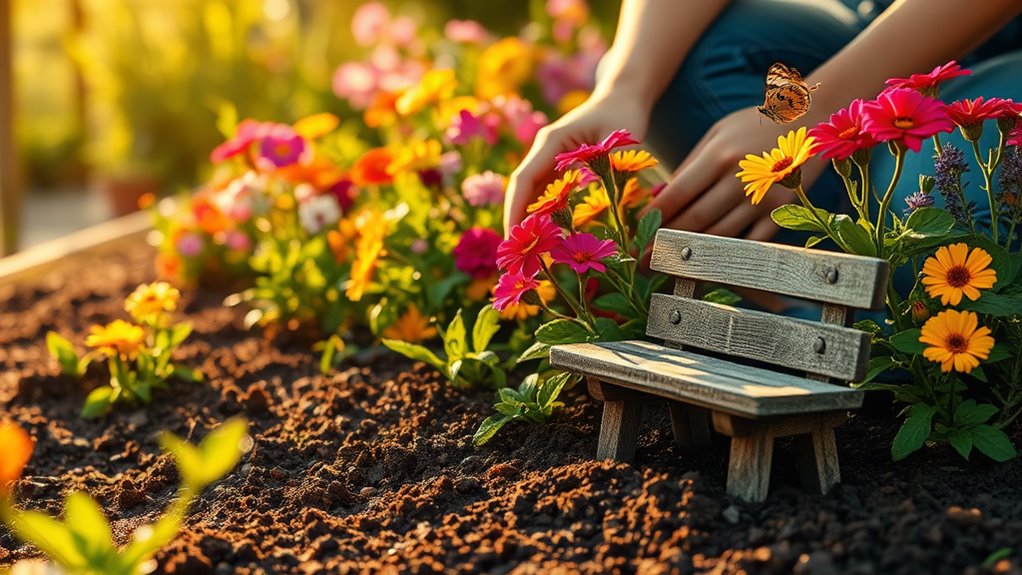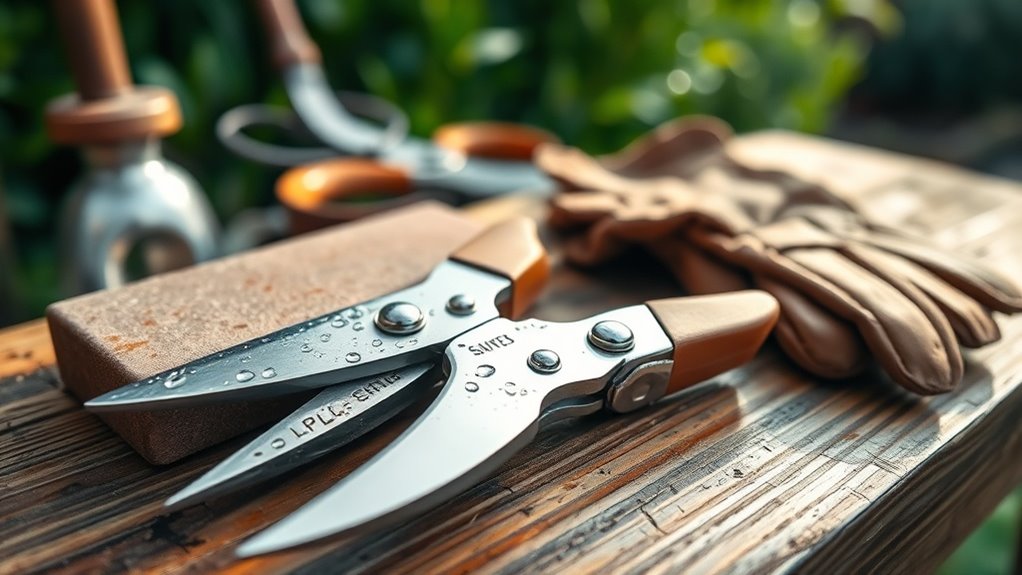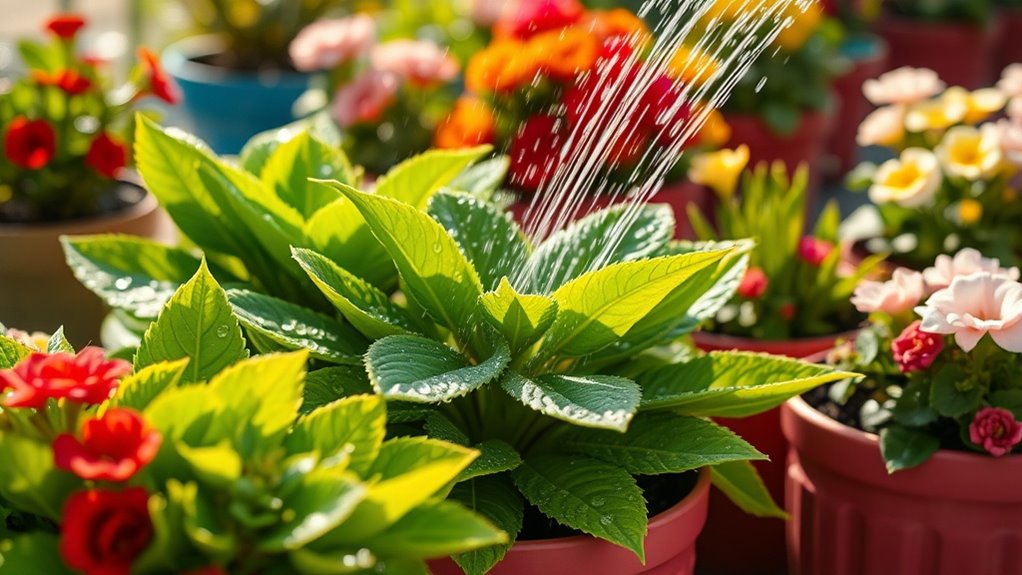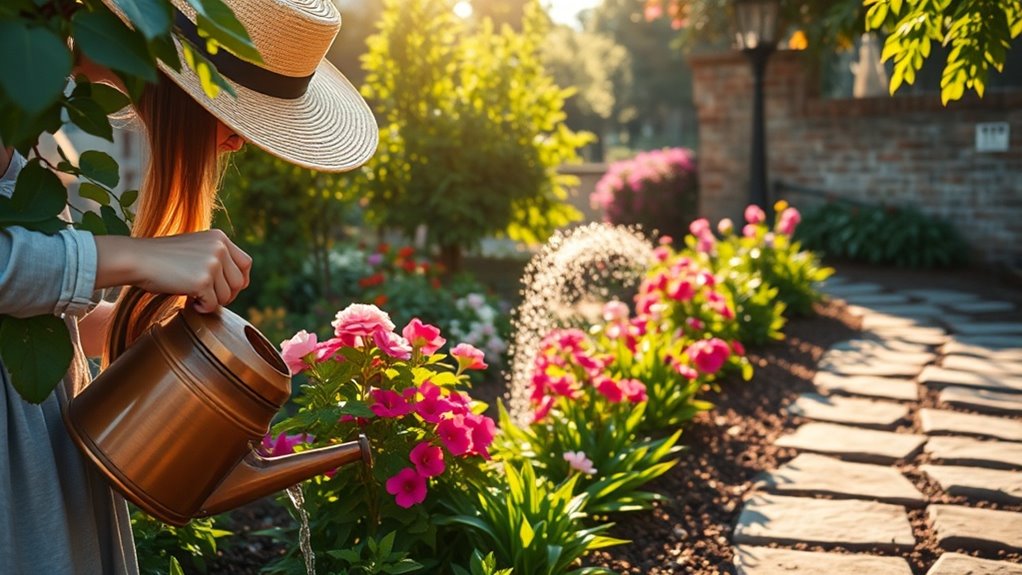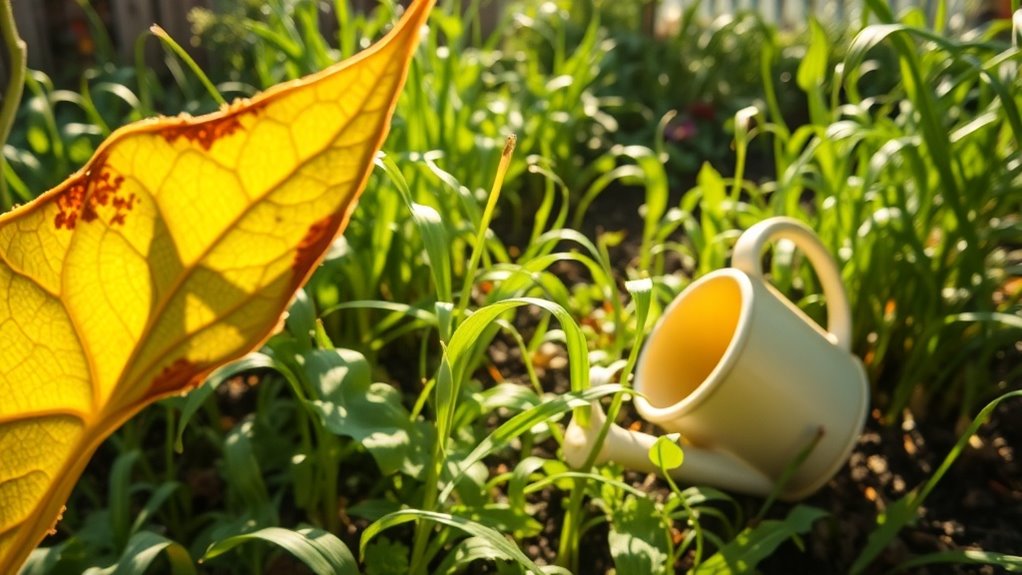A 5-Minute Daily Garden Routine That Works Wonders
Just like a maestro fine-tunes an orchestra, a simple daily garden routine can transform your plants from ordinary to extraordinary. In just five minutes, you can check soil moisture, inspect for pests, and manage weeds. These small tasks can prevent larger problems down the line. But there’s more to this routine that can enhance your garden’s health and beauty. Discover how these quick actions can make a significant difference in your gardening journey.
Key Takeaways
- Check soil moisture levels daily, ensuring plants receive adequate hydration without overwatering.
- Remove weeds and dead leaves to maintain tidiness and prevent disease spread.
- Inspect plants for signs of pests or stress, focusing on leaves and stems for health indicators.
- Water early in the morning, aiming for deep hydration with about an inch of water weekly.
- Document growth and changes to track progress and adjust care routines accordingly.
The Importance of Daily Garden Care
Daily garden care is crucial for maintaining the health and beauty of your plants. By dedicating just a few minutes each day, you can accomplish quick garden maintenance that prevents larger issues down the line. Start by checking moisture levels in the soil; if it’s dry, give your plants a drink. Remove any weeds or dead leaves to keep your garden tidy and disease-free. A quick visual inspection will help you spot any pests or signs of stress. Additionally, incorporating a simple daily routine can greatly enhance your gardening efficiency. With this consistent routine, you’ll ensure your garden thrives, making it a beautiful space to enjoy throughout the seasons.
Quick Plant Inspection Techniques
How can you quickly assess the health of your plants? Start with these simple techniques:
- Inspect Leaves: Look for discoloration or spots; they often signal pests or disease.
- Check Stems: Firm, green stems indicate vitality; softness or browning suggests trouble.
- Feel Soil: Dry soil may mean your plants need water; overly wet soil can cause root rot.
- Observe Growth: Stunted or leggy growth signals insufficient light or nutrients.
With just a few minutes daily, you can catch issues early and keep your garden thriving.
Regular inspections help nurture your plants and prevent bigger problems down the road.
Efficient Watering Tips
When’s the best time to water your garden for maximum efficiency? Early morning is ideal, as it allows plants to absorb moisture before the heat of the day.
Aim for deep watering—about an inch per week—preferably using a soaker hose or drip irrigation to minimize evaporation.
To check soil moisture, stick your finger about an inch deep; if it’s dry, it’s time to water.
Group plants with similar water needs together to streamline your routine.
Finally, consider collecting rainwater; it’s eco-friendly and great for your garden. Proper watering techniques can significantly enhance plant health and growth.
With these tips, you’ll keep your plants thriving without wasting water.
Weeding in Minutes
After ensuring your garden is well-watered, tackling weeds becomes a top priority.
Weeds compete for nutrients and sunlight, so addressing them quickly can save your plants.
Here’s how to efficiently manage weeding in just a few minutes:
- Spot Weeds Early: Check daily for new growth; the sooner you act, the easier it is.
- Use a Hand Tool: A small trowel or weeder makes extraction simple.
- Pull with Care: Grasp the base and pull slowly to remove the roots.
- Dispose Properly: Don’t toss weeds in the compost; they could regrow.
In addition, consider using natural methods to eliminate garden weeds easily, which can enhance your weeding efforts.
Your garden will thank you!
Pruning and Deadheading Essentials
While maintaining a vibrant garden, pruning and deadheading are essential practices that boost plant health and encourage blooming.
Start by deadheading spent flowers, cutting just above the first set of leaves to promote new growth.
This encourages your plants to focus energy on producing fresh blooms rather than seed production.
For pruning, assess your plants for any dead or damaged branches; removing these improves air circulation and light penetration.
Use sharp, clean tools to make precise cuts, minimizing stress on your plants.
Incorporating these simple routine practices regularly ensures a more abundant and healthier garden, giving you rewarding results throughout the growing season.
Soil Health Checks
Check your soil health regularly to ensure your plants thrive.
Healthy soil is essential for vibrant growth and resilience. Here’s what to focus on during your checks:
- Moisture Level: Stick your finger into the soil; it should feel slightly damp, not soggy.
- pH Balance: Use a pH meter to check; most plants prefer a range of 6.0 to 7.0.
- Nutrient Content: Look for organic matter; add compost if it feels lacking.
- Soil Structure: Crumble a handful; it should break apart easily, indicating good aeration.
Regular checks keep your garden flourishing and your plants happy! Additionally, consider evaluating garden soil health by observing the presence of earthworms, as they indicate a thriving ecosystem.
Celebrating Your Garden Progress
Tracking your garden’s growth milestones not only helps you appreciate your hard work but also provides valuable insights for future planting. Consider documenting each stage with photos or notes, as this creates a rewarding visual journey. Sharing these achievements with your community, whether through social media or local gardening groups, can inspire others and foster a supportive network. Additionally, implementing a simple morning routine can significantly enhance your garden care efforts and ensure consistent progress.
Documenting Growth Milestones
How can you truly appreciate the fruits of your labor in the garden?
Documenting growth milestones helps you celebrate your progress and stay motivated.
Here are four ways to effectively track your garden’s journey:
- Take Photos: Capture the transformation, from seeds to blooms, to visually highlight growth.
- Keep a Journal: Note daily observations, weather changes, and challenges faced.
- Create Growth Charts: Graph your plants’ heights and yields over time for a clear visual reference.
- Set Goals: Establish milestones, like first blooms, to mark your achievements and inspire future gardening endeavors.
Sharing With Community
Why keep your garden’s successes to yourself when sharing them can enrich both your experience and that of your community?
Celebrate your progress by posting updates on social media or joining local gardening groups. Share vibrant photos of your blooms, harvests, or unique gardening techniques.
Engaging with others can spark inspiration and foster connections. Consider hosting a small garden tour or sharing produce with neighbors, creating a sense of camaraderie.
Your journey not only motivates you but also encourages fellow gardeners. Remember, every shared experience contributes to collective knowledge and joy in the gardening community.

